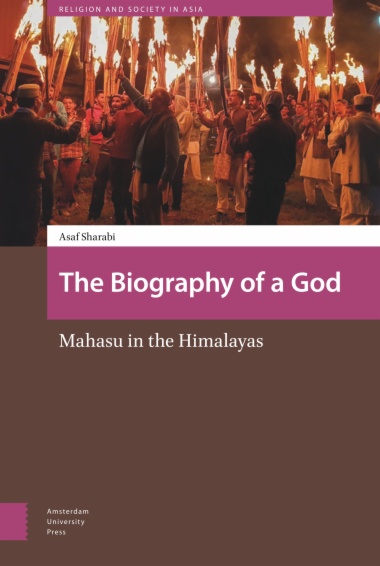Mahasu is the joint name of four gods whose influence is widespread throughout the Indian states of Himachal Pradesh and Uttarakhand. Like other deities in the Western Himalayas, they are regarded as royal gods who rule over territories and people. This book traces changes in faith and practices surrounding the Mahasu brothers, and shows how the locals understand these changes by emphasizing the dominant role of humans in the decisions of the gods. The locals are also constantly testing the authenticity of the human mediumship. Thus, the book presents the claim that the gap between local conceptions of divinity and the perceptions of anthropologists regarding gods may be narrower than we think.
The Biography of a God: Mahasu in the Himalayas is based on ethnographic research, resulting in an important contribution to the study of Indian village deities, Himalayan Hinduism, lived Hinduism, and the anthropology of religion.
- Cover
- Table of Contents
- Notes on Transliteration
- Acknowledgments
- Meet Mahasu
- 1. Gods on the Road
- Getting into the Field
- The Devta Institution
- 2. A Stormy Biography
- The Appearance of Mahasu: Version 1
- The Appearance of Mahasu: Version 2
- The Gods They Are a-Changin’
- 3. The Four Brothers
- Personalities and Identities
- The Four Kings
- Mahasu as Shiva
- Gods between Here and Everywhere
- 4. Local Traditions in Times of Change
- Local Rituals Fade, Gods Persevere
- From Carnivore to Vegetarian
- When Gods Settle Down
- Mahasu’s Agency
- 5. Communicating with Mahasu
- The God’s Management
- Mediums
- Talking with Mahasu
- Testing Mediums
- Agency, Doubt, Mediation
- Index
- List of Figures
- Images
- Image 1 A view of Jubbal. On the right, Jubbal market. On the left, Jubbal Palace, which was once the abode of the Jubbal royal family
- Image 2 Meeting between Shikru and Mahasu during Rohru mela
- Image 3 Devta on the move
- Image 4 Medium (mali) in action
- Image 5 Nishan (sign) of Botha
- Image 6 The temple in Maindrath. The temple is near the field from which Mahasu emerged
- Image 7 Botha in movement, manifested through his nishan (sign)
- Image 8 Shari Banar is in the right tent, talking with the villagers through the mali
- Image 9 Mahasu’s temple in Hanol
- Image 10 Statues of Shiva, Parvati, Ganesha, and Nandi in Thadiyar
- Image 11 Doria of Mahasu on the road in the Pabbar river valley
- Image 12 Chira in Jubbal
- Image 13 Medium and a priest during Jagra, Jubbal
- Image 14 Ghanduvas at Hanol
- Image 15 A priest sprinkles water and rice on a goat before it is slaughtered
- Image 16 The bridge near Thadiyar, where Chalda crosses once every twelve years
- Image 17 Pabasi’s temple at Thadiyar
- Image 18 Pujari in action, Jubbal
- Image 19 Bajgis in action, Thadiyar
- Image 20 Mali in action
- Image 21 Mali in action
- Image 22 Mali in action
- Image 23 Gatti in action
- Image 24 Gatti in action
- Maps
- Map 1 Mahasu’s territory, on the border of two states in India—Himachal Pradesh and Uttarakhand
- Map 2 Mahasu’s territory, with the division of shathi and pashi. In the middle is the village of Hanol, where the central temple of Mahasu is located
- Map 3 Mahasu’s territory, with the division of shathi and pashi. In the center are the regions of Bawar and Bangan

